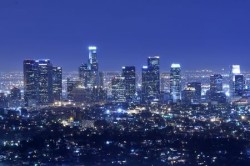Being a member of the LGBT community in Los Angeles is something of a paradox, especially if you’re in the entertainment industry. For most people, it’s not a big deal until suddenly it is. Movie and television stars often stay in the closet for as long as they can because they fear it will hurt their careers, although more and more are refusing to hide who they truly are. For the average LGBT person living in L.A., there’s no need to remain closeted. The city is quite accepting and open to everyone, and certain neighborhoods are definitely gay districts.
 L.A.’s LGBT population is hard to judge simply because many people are closeted, but in 2007, a survey reported that about 3.7 percent of people in Los Angeles County considered themselves a member of the LGBT community. A very large percentage of these people live in West Hollywood. Almost 40 percent of the area’s residents considered themselves LGBT in 2014. It’s no wonder, then, that West Hollywood has been called Gay Camelot and Boys Town!
L.A.’s LGBT population is hard to judge simply because many people are closeted, but in 2007, a survey reported that about 3.7 percent of people in Los Angeles County considered themselves a member of the LGBT community. A very large percentage of these people live in West Hollywood. Almost 40 percent of the area’s residents considered themselves LGBT in 2014. It’s no wonder, then, that West Hollywood has been called Gay Camelot and Boys Town!
Silver Lake is another major LGBT community. This is a very eclectic area—homes are a mixture of styles, and the population is about the same. While there are a number of gay singles and couples here, there are also many young straight couples and older retired people in the neighborhood.
There are a lot of other neighborhoods and suburbs in and around L.A. with large LGBT populations, including Venice, Santa Monica, North Hollywood, Sherman Oaks, Van Nuys, and Elysian Parks.
L.A. hosts a large gay pride parade every June, and the city is home to a number of LGBT community centers and institutions. The ONE National Gay & Lesbian Archives is located at the University of Southern California and operates a museum in West Hollywood. The first social center for lesbians, the Gay Women’s Service Center, has operated in the city since 1971. ONE Magazine, the first LGBT publication to have a nationwide circulation, was first published in Los Angeles. The city was also home to the Mattachine Society, the very first sustained LGBT rights group in the country. It was founded in 1950.
As far as civil liberties go, California made news with the battle over Proposition 8 and the fact that same-sex marriage became legal for a short period of time, was put on hold, and then was finally made a full, indisputable right. The case has influenced the same-sex marriage cases in a number of states since, and the precedent it set is sure to play a part in the Supreme Court’s deliberations in 2015.
